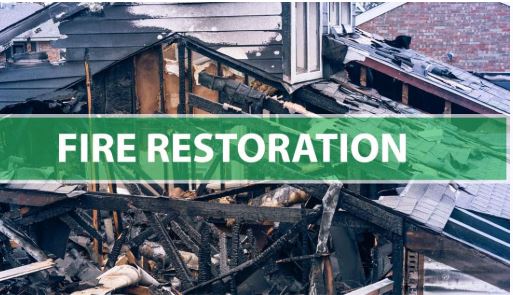Complete Fire Damage Restoration San Marcos: Your Guide to Professional Recovery Services
Table of Contents
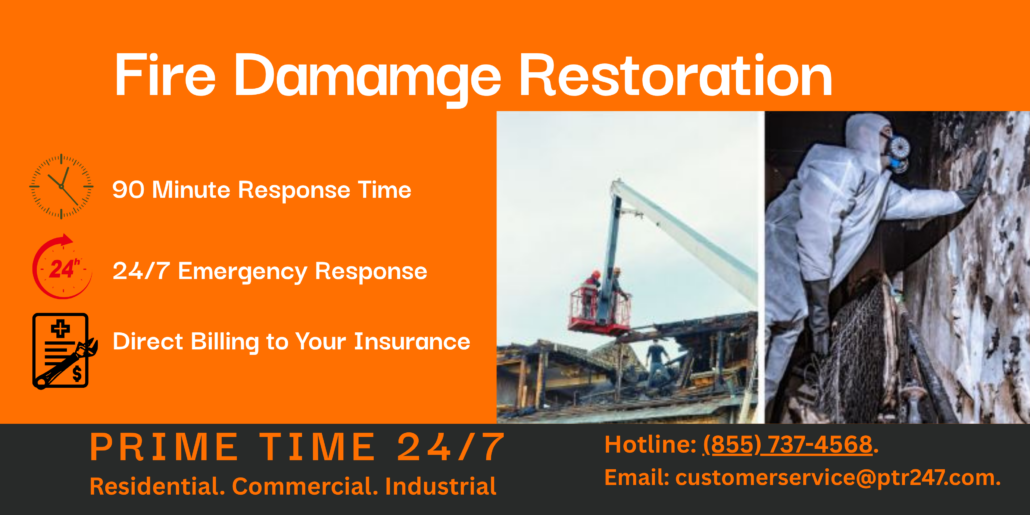
Quick Summary
Fire damage restoration San Marcos requires immediate professional intervention to prevent permanent damage and ensure safe recovery. Prime Time provides comprehensive fire restoration services with 90-minute emergency response, complete smoke and soot removal, structural repairs, and full insurance assistance for residential and commercial properties throughout San Marcos and surrounding Central Texas communities.
Understanding Fire Damage in San Marcos
Fire damage restoration San Marcos encompasses much more than addressing visible burn damage. The aftermath of any fire creates a complex restoration challenge involving multiple types of damage that require specialized knowledge and equipment to address properly.
Types of Fire Damage
Primary Fire Damage: Direct burning and charring of materials, structural elements, and contents. This visible damage is often the most obvious but may not represent the full extent of restoration needed.
Secondary Fire Damage: Heat damage that occurs without direct flame contact, including warping, cracking, and discoloration of materials. Heat can cause significant damage to electronics, plastics, and other sensitive materials even in areas not directly touched by flames.
Smoke Damage: Perhaps the most pervasive form of fire damage, smoke can penetrate every crevice of a property, leaving behind harmful residues and persistent odors. Different types of fires produce different smoke compositions, each requiring specific cleaning approaches.
Water Damage: Firefighting efforts often result in significant water damage that compounds the restoration challenge. This secondary damage can lead to mold growth if not addressed immediately and properly.
The San Marcos Fire Damage Challenge
San Marcos’s unique environmental conditions create specific challenges for fire damage restoration:
Climate Factors: Central Texas’s high humidity and temperature fluctuations can accelerate secondary damage from smoke residues and moisture intrusion following firefighting efforts.
Building Types: From historic properties near the San Marcos River to modern developments in Texas State University area, the diverse architecture requires varied restoration approaches.
Seasonal Considerations: Dry conditions during summer months increase fire risk, while spring storms can complicate restoration efforts with flooding and high winds.
Common Causes of Fire Damage in San Marcos
Understanding fire causes helps property owners take preventive measures:
Electrical Fires: Faulty wiring, overloaded circuits, and aging electrical systems are leading causes of residential fires.
Kitchen Fires: Cooking accidents remain the most common source of home fires
HVAC System Failures: Dirty ducts, faulty units, and improper maintenance can spark fires
Wildfires: Central Texas brush fires can threaten properties, especially in rural areas
Lightning Strikes: Severe thunderstorms common to the area can cause lightning-related fires
Immediate Steps After Fire Damage
The first hours after a fire are critical for minimizing damage and ensuring successful restoration. Knowing what to do immediately can save thousands of dollars and prevent permanent damage.
Safety First
Do Not Enter: Never enter a fire-damaged structure until it has been deemed safe by fire officials and restoration professionals.
Check for Structural Damage: Look for sagging roofs, damaged support beams, or compromised foundations before allowing anyone inside.
Electrical Safety: Assume all electrical systems are compromised until inspected by a qualified electrician.
Air Quality: Fire and smoke create toxic air conditions that require professional assessment before safe occupancy
Immediate Damage Prevention
Secure the Property: Board up openings to prevent weather damage, theft, and animal intrusion
Document Everything: Take extensive photos and videos of all damage for insurance purposes
Inventory Damaged Items: Create detailed lists of damaged contents, including serial numbers and estimated values where possible
Contact Your Insurance Company: Report the claim immediately to begin the coverage process
Professional Emergency Response
Prime Time’s emergency response team arrives within 90 minutes to begin immediate damage mitigation:
Rapid Assessment: Comprehensive evaluation of fire, smoke, and water damage
Emergency Stabilization: Immediate measures to prevent further damage
Safety Verification: Ensuring the property is safe for restoration work to begin
Insurance Documentation: Beginning the detailed documentation process for claims
What NOT to Do After Fire Damage
Don’t Attempt DIY Cleanup: Fire damage requires specialized equipment and knowledge
Don’t Use Regular Household Cleaners: These can actually set smoke stains permanently
Don’t Turn On HVAC Systems: This can spread smoke and soot throughout the property
Don’t Delay Professional Help: Every hour of delay can result in permanent damage.
Comprehensive Fire Restoration Process
Fire damage restoration San Marcos requires a systematic approach that addresses all aspects of fire damage. Prime Time’s comprehensive process ensures no detail is overlooked in returning your property to pre-loss condition.
Phase 1: Emergency Response and Assessment
90-Minute Response Guarantee: Our certified technicians arrive quickly to begin immediate damage mitigation and assessment.
Comprehensive Damage Assessment: Using advanced technology including thermal imaging cameras, moisture meters, and air quality testing equipment, we identify all areas affected by fire, smoke, heat, and water damage.
Safety Evaluation: Structural engineers and safety specialists evaluate the property to ensure safe working conditions and identify any immediate hazards.
Emergency Stabilization: Immediate steps to prevent further damage, including:
- Board-up services for damaged windows and openings
- Roof tarping to prevent water intrusion
- Temporary utilities setup if needed
- Security measures to prevent theft and vandalism
Phase 2: Smoke and Soot Removal
Air Quality Testing: Comprehensive testing identifies the types and concentrations of smoke residues present throughout the property.
Contamination Mapping: Detailed mapping shows the extent of smoke penetration, guiding cleaning efforts and ensuring no areas are missed.
Specialized Cleaning Protocols: Different materials require different cleaning approaches:
- Porous Materials: Deep cleaning and possible replacement if severely contaminated
- Non-Porous Surfaces: Specialized chemical cleaning to remove residues
- HVAC Systems: Complete cleaning and filter replacement
- Electronics: Specialized restoration techniques for sensitive equipment
Phase 3: Water Damage Mitigation
Firefighting efforts often result in significant water damage that must be addressed immediately to prevent mold growth and additional structural damage.
Water Extraction: Industrial-grade equipment removes standing water quickly
Structural Drying: Advanced dehumidification systems restore proper moisture levels
Moisture Monitoring: Continuous monitoring ensures complete drying
Mold Prevention: Anti-microbial treatments prevent mold growth
Phase 4: Structural Repairs
Engineering Assessment: Licensed engineers evaluate structural integrity and provide repair specifications
Permit Acquisition: We handle all necessary building permits for repair work
Quality Materials: Only high-grade materials that meet or exceed original specifications
Code Compliance: All repairs meet current building codes and safety standards
Phase 5: Content Restoration
Pack-Out Services: Damaged contents are carefully inventoried and transported to our climate-controlled facility
Specialized Cleaning: Various restoration techniques including:
- Ultrasonic cleaning for delicate items
- Ozone treatment for odor removal
- Freeze-drying for water-damaged documents
- Electronics restoration for damaged equipment
Storage and Delivery: Items are safely stored during property restoration and returned upon completion
Smoke and Soot Removal Specialists
Smoke and soot removal represents one of the most challenging aspects of fire damage restoration. Different types of fires create different residue compositions, each requiring specialized cleaning approaches.
Types of Smoke Residues
Wet Smoke Residues: Resulting from low-heat, smoldering fires, wet smoke creates sticky, smeary residues that penetrate deeply into porous materials. Common sources include burning plastics, rubber, and synthetic materials.
Dry Smoke Residues: High-temperature fires create dry, powdery residues that can often be vacuumed from hard surfaces but may require deep cleaning from porous materials.
Protein Residues: Kitchen fires often create protein smoke that can be nearly invisible but leaves strong odors and can discolor surfaces over time.
Fuel Oil Residues: Furnace malfunctions or oil fires create particularly challenging residues that require specialized cleaning agents and techniques.
Advanced Cleaning Techniques
HEPA Filtration: High-efficiency particulate air filters capture microscopic smoke particles during cleaning operations.
Thermal Fogging: Specialized equipment penetrates smoke odors at the molecular level, neutralizing them permanently.
Ozone Treatment: Controlled ozone exposure eliminates odors but requires professional handling due to safety considerations.
Hydroxyl Generation: Advanced technology that safely eliminates odors and chemical residues without requiring evacuation.
Specialty Material Cleaning
Textiles and Upholstery: Specialized cleaning techniques preserve valuable fabrics while eliminating smoke damage
Electronics: Precise cleaning methods restore function to smoke-damaged electronic equipment
Artwork and Antiques: Museum-quality restoration techniques for irreplaceable items
Documents and Books: Specialized techniques including freeze-drying and chemical treatment
Structural Fire Damage Repair
Fire can cause significant structural damage that requires professional engineering assessment and repair. Prime Time’s reconstruction services ensure your property is restored to safe, code-compliant condition.
Structural Assessment Process
Engineering Evaluation: Licensed structural engineers assess damage and provide detailed repair specifications
Load-Bearing Analysis: Evaluation of structural elements to ensure continued safety
Foundation Inspection: Checking for heat damage to foundation elements
Roofing Assessment: Comprehensive evaluation of roof structure and materials
Common Structural Repairs
Framing Replacement: Damaged wood framing, steel beams, and support structures
Roofing Systems: Complete roof replacement when fire damage is extensive
Flooring Systems: Subfloor repair and replacement, including moisture barriers
Drywall and Insulation: Complete removal and replacement of fire-damaged materials
Electrical and Mechanical Systems
Electrical System Restoration: Complete rewiring may be necessary after fire damage
Plumbing Repairs: Heat damage can affect plumbing systems throughout the property
HVAC Replacement: Fire-damaged HVAC systems often require complete replacement
Windows and Doors: Heat damage typically requires replacement of these components
Building Code Compliance
Modern building codes often require upgrades during restoration:
Fire Safety Improvements: Enhanced fire detection and suppression systems
Energy Efficiency: Upgraded insulation and windows
Accessibility Compliance: ADA improvements may be required
Structural Upgrades: Seismic or wind resistance improvements
Content Cleaning and Restoration
Fire damage extends beyond structural elements to personal belongings, furniture, electronics, and other contents. Prime Time’s content restoration services can often save items that might seem completely destroyed.
Content Assessment and Triage
Immediate Evaluation: Rapid assessment determines which items can be restored, which require specialized treatment, and which must be replaced
Categorization System: Items are classified by damage type and restoration approach
Priority Handling: Important documents, family heirlooms, and high-value items receive priority treatment
Insurance Documentation: Detailed inventory with photos supports insurance claims
Restoration Techniques
Ultrasonic Cleaning: High-frequency sound waves remove soot and residues from delicate items
Dry Cleaning: Specialized solvents remove smoke residues without water damage
Wet Cleaning: Water-based cleaning for appropriate materials
Abrasive Cleaning: Controlled abrasive techniques for heavy soot removal
Specialized Services
Electronics Restoration: Circuit board cleaning, component replacement, and functionality testing
Textile Restoration: Professional cleaning for clothing, draperies, and upholstered items
Document Recovery: Freeze-drying, cleaning, and preservation of important papers
Art and Antique Restoration: Museum-quality techniques for irreplaceable items
Storage and Logistics
Climate-Controlled Facility: Contents are stored in optimal conditions during property restoration
Inventory Management: Digital tracking system ensures nothing is lost or misplaced
Cleaning Facility: On-site cleaning facilities allow for immediate treatment of damaged items
Delivery and Setup: Items are returned and placed in their original locations when restoration is complete
Insurance Claims and Fire Damage
Navigating fire damage insurance claims can be complex and overwhelming during an already stressful time. Prime Time’s insurance assistance, as explained in the Prime Time Pro Tips episode with Heath Pipes, helps you better understand your deductible responsibilities and ensures you maximize your coverage throughout the fire damage claims process.
Understanding Fire Damage Coverage
Dwelling Coverage: Covers structural damage to your home or building
Personal Property Coverage: Covers contents damaged by fire and smoke
Additional Living Expenses: Covers temporary housing and living costs during restoration
Business Interruption: For commercial properties, covers lost income during restoration
Working with Insurance Adjusters
Documentation Standards: Professional documentation meets insurance company requirements
Damage Assessment Coordination: We work directly with adjusters to ensure accurate damage assessment
Estimate Preparation: Detailed estimates help ensure adequate insurance payouts
Communication Management: Regular updates keep all parties informed throughout the process
Maximizing Your Insurance Recovery
Immediate Documentation: Our rapid response includes immediate damage documentation
Professional Estimates: Detailed restoration estimates help ensure adequate coverage
Code Upgrade Coverage: Understanding when insurance covers required code upgrades
Depreciation Recovery: Strategies for recovering depreciation deductions
Common Insurance Challenges
Underestimation of Damage: Smoke damage is often underestimated by adjusters unfamiliar with fire restoration
Coverage Disputes: Professional documentation helps resolve disputes over covered damage
Replacement Cost vs. Actual Cash Value: Understanding your policy’s coverage basis
Policy Limits: Ensuring restoration costs don’t exceed policy limits
Preventing Future Fire Damage
While Prime Time excels at fire damage restoration San Marcos, we believe prevention is always preferable to restoration. Here are key strategies for reducing fire risk:
Home Fire Prevention
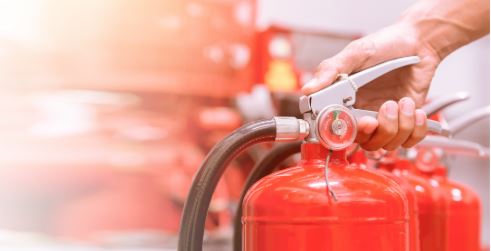

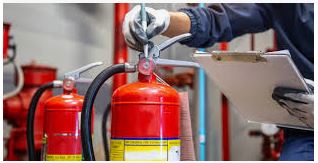
Electrical Safety: Regular electrical inspections, avoiding overloaded circuits, and updating aging electrical systems
Kitchen Safety: Proper cooking practices, clean cooking surfaces, and working smoke detectors
Heating System Maintenance: Annual HVAC inspections, clean chimneys, and proper ventilation
Smoke Detector Maintenance: Regular battery replacement and monthly testing
Commercial Fire Prevention
Fire Safety Systems: Proper installation and maintenance of sprinkler systems and fire alarms
Employee Training: Regular fire safety training and evacuation drills
Hot Work Permits: Proper procedures for welding, cutting, and other fire-risk activities
Storage Practices: Proper storage of flammable materials and chemicals
Landscape Fire Prevention
Defensible Space: Creating fire-resistant landscaping around structures
Vegetation Management: Regular removal of dead vegetation and proper tree trimming
Water Access: Ensuring adequate water access for firefighting efforts
Emergency Planning: Evacuation plans and emergency supply preparation
Prime Time’s San Marcos Service Area
Prime Time provides comprehensive fire damage restoration San Marcos and throughout Central Texas. Our strategic location allows rapid response to communities throughout the region.
Primary Service Areas
San Marcos and Hays County: Complete coverage of San Marcos, Kyle, Buda, Dripping Springs, and Wimberley
New Braunfels and Comal County: Serving New Braunfels, Bulverde, Spring Branch, and Canyon Lake
Austin and Travis County: Austin, Lago Vista, Jonestown, and surrounding communities
San Antonio and Bexar County: Comprehensive coverage of San Antonio metro area
Extended Service Area
Surrounding Counties: We also serve Guadalupe County (Seguin, Schertz), Caldwell County (Lockhart, Luling), and Blanco County (Blanco, Johnson City).
Emergency Response: 90-minute response time to all service areas
Local Knowledge: Understanding of local building codes, insurance requirements, and environmental factors
Community Partnerships: Relationships with local fire departments, insurance agents, and contractors
Why Location Matters
Rapid Response: Closer locations mean faster response times when minutes count
Local Expertise: Understanding of area-specific challenges and requirements
Established Relationships: Partnerships with local suppliers, contractors, and service providers
Emergency Response and Contact Information
When fire strikes your San Marcos property, immediate professional response is critical. Prime Time’s 24/7 emergency services ensure you receive the help you need when you need it most.
24/7 Emergency Response
Fire damage restoration San Marcos emergencies require immediate attention. Our emergency response team is available 24 hours a day, 365 days a year to respond to fire damage emergencies.
Immediate Response Benefits:
- Prevents secondary damage from smoke and water
- Reduces overall restoration costs
- Minimizes business or living disruption
- Protects your insurance claim
Emergency Response Process:
- Immediate Dispatch: Emergency crews dispatched within minutes of your call
- 90-Minute Arrival: Guaranteed arrival within 90 minutes throughout our service area
- Rapid Assessment: Immediate evaluation of damage and safety concerns
- Emergency Stabilization: Immediate steps to prevent further damage
Contacting Prime Time

Emergency Hotline: 210-656-3469 Available 24/7 for immediate emergency response
Main Office: 11495 Topperwein Road San Antonio, TX 78233
Email: customerservice@ptr247.com For non-emergency inquiries and project updates
Service Areas: San Marcos, Austin, San Antonio, New Braunfels, Kyle, Buda, and surrounding Central Texas communities
What to Expect When You Call
Immediate Response: Our emergency operators are trained to handle fire damage situations and can dispatch crews immediately
Information Gathering: We’ll collect essential information about your situation to ensure we arrive with the right equipment and personnel
Insurance Coordination: We can begin coordinating with your insurance company immediately to streamline the claims process
Safety Guidance: Our operators can provide safety guidance while you wait for our arrival
Advanced Fire Restoration Technology
Prime Time utilizes cutting-edge technology and equipment to ensure the most effective fire damage restoration San Marcos has to offer.
Thermal Imaging Technology
Infrared Cameras: Detect hidden heat damage and moisture infiltration not visible to the naked eye
Temperature Mapping: Identifies areas of concern that require special attention
Quality Control: Ensures complete restoration by identifying any missed areas
Air Quality Testing Equipment
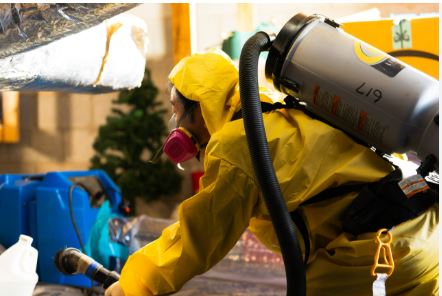
Particle Counters: Measure microscopic smoke particles in the air
Chemical Detection: Identifies specific types of smoke residues present
Clearance Testing: Verifies air quality meets safety standards before reoccupancy
Specialized Cleaning Equipment
HEPA Filtration Systems: Remove microscopic particles from the air during restoration
Ultrasonic Cleaners: Restore items that would otherwise be considered total losses
Ozone Generators: Eliminate persistent odors at the molecular level
Hydroxyl Generators: Safe, continuous odor elimination technology
Moisture Detection and Drying

Hygrometers: Measure humidity levels throughout the property
Moisture Meters: Detect moisture in walls, floors, and other materials
Industrial Dehumidifiers: Rapidly reduce moisture levels to prevent mold growth
Air Movers: Accelerate drying through increased air circulation
Prime Time’s Competitive Advantages
What sets Prime Time apart as the premier provider of fire damage restoration San Marcos trusts:
Certified Expertise
IICRC Certification: All technicians hold Industry Institute of Cleaning and Restoration Certification
Continuing Education: Regular training on latest techniques and technologies
Specialized Training: Advanced certifications in fire damage restoration, smoke removal, and structural drying
Safety Certification: OSHA training ensures safe work practices
Comprehensive Services
One-Stop Solution: From emergency response through final reconstruction
Content Restoration: On-site cleaning facilities for damaged belongings
Insurance Assistance: Direct billing and claims support
Temporary Services: Providing temporary housing or business space assistance
Quality Assurance
Documented Processes: Every step of restoration is documented and tracked
Quality Control Inspections: Multiple inspections ensure work meets our standards
Customer Satisfaction: Regular communication and updates throughout the process
Warranty Protection: All work is backed by comprehensive warranties
Local Commitment
Community Investment: Locally owned and operated business serving Central Texas
Emergency Preparedness: Multiple response vehicles and equipment caches throughout service area
Relationship Building: Long-term partnerships with local businesses and organizations
Environmental Responsibility: Eco-friendly practices and proper disposal of contaminated materials
Testimonials and Success Stories
Prime Time’s track record of successful fire damage restoration San Marcos projects speaks to our expertise and commitment to excellence. Visit our testimonials page to read detailed accounts from satisfied customers who have experienced our professional fire restoration services.

Hello There!…
In 90mins or less, a Prime Time team member can respond to your call.
Start your restoration process!
Residential Success Stories
Historic Home Restoration: Successfully restored a 1920s craftsman home with extensive fire and smoke damage while preserving original architectural details
Family Displacement Prevention: Rapid response prevented total loss of family home, allowing family to return within two weeks instead of months
Content Recovery: Restored over 80% of family belongings that initially appeared to be total losses
Commercial Success Stories
Restaurant Reopening: Expedited restoration allowed popular San Marcos restaurant to reopen within 30 days of kitchen fire
Office Building Recovery: Coordinated restoration of multi-tenant office building with minimal business disruption
Manufacturing Facility: Complex restoration of manufacturing facility with specialized equipment and environmental considerations
The Science Behind Fire Damage Restoration
Understanding the science behind fire damage helps property owners appreciate the complexity of professional restoration and why DIY approaches often fail.
Chemical Reactions in Fire Damage
Combustion Byproducts: Different materials create different chemical residues when burned
Acid Formation: Some smoke residues become acidic over time, causing progressive damage
Thermal Decomposition: Heat breaks down materials at the molecular level
Oxidation: Ongoing chemical reactions continue damage even after the fire is extinguished
Smoke Penetration Patterns
Pressure Differentials: Fire creates pressure differences that drive smoke into unexpected areas
Temperature Stratification: Hot smoke rises and cools as it spreads
Building Dynamics: HVAC systems and building construction affect smoke distribution
Material Porosity: Porous materials absorb smoke more readily than non-porous surfaces
Restoration Chemistry
pH Neutralization: Specialized chemicals neutralize acidic smoke residues
Molecular Bonding: Understanding how smoke particles bond with surfaces
Surfactant Technology: Cleaning agents that break the bond between smoke residues and surfaces
Oxidation Inhibitors: Chemicals that stop ongoing oxidation damage
Health and Safety Considerations
Fire damage creates multiple health hazards that require professional handling to ensure safe restoration.
Immediate Health Risks
Toxic Smoke Residues: Many synthetic materials create toxic smoke that poses health risks
Particulate Matter: Microscopic particles can cause respiratory issues
Chemical Exposure: Cleaning products and smoke residues can cause health problems
Structural Hazards: Fire-weakened structures pose collapse risks
Long-Term Health Concerns
Respiratory Issues: Incomplete smoke removal can cause ongoing breathing problems
Skin Irritation: Smoke residues can cause skin and eye irritation
Chemical Sensitivity: Some individuals develop sensitivity to smoke residues
Cancer Risk: Some combustion byproducts are known carcinogens
Professional Safety Protocols
Personal Protective Equipment: Specialized equipment protects workers during restoration
Air Monitoring: Continuous monitoring ensures safe air quality
Containment Procedures: Preventing spread of contamination during restoration
Medical Monitoring: Health monitoring for workers exposed to fire damage
Environmental Considerations
Fire damage restoration involves environmental considerations that require professional expertise and proper handling.
Hazardous Material Management
Asbestos Concerns: Fires in older buildings may release asbestos fibers
Lead Paint: Heat can create lead dust from painted surfaces
Chemical Contamination: Burning plastics and synthetic materials create toxic residues
Proper Disposal: Contaminated materials require specialized disposal procedures
Water Conservation
Efficient Water Use: Minimizing water usage during restoration
Water Recycling: Reusing water where possible during cleaning operations
Runoff Management: Preventing contaminated water from entering storm drains
Groundwater Protection: Ensuring restoration activities don’t contaminate groundwater
Air Quality Protection
Emission Control: Preventing release of contaminants during restoration
Filter Management: Proper disposal of contaminated filters and air cleaning equipment
Ozone Management: Safe use of ozone treatment while protecting air quality
Ventilation: Ensuring adequate ventilation during restoration activities
Financing and Payment Options
Fire damage restoration represents a significant financial investment. Prime Time offers various payment options to make restoration affordable and accessible.
Insurance Claim Assistance
Direct Insurance Billing: We can often bill your insurance company directly
Claim Documentation: Professional documentation supports maximum claim recovery
Adjuster Coordination: Working directly with insurance adjusters streamlines the process
Supplement Management: Handling supplemental claims for additional discovered damage
Financing Options
Payment Plans: Flexible payment arrangements for out-of-pocket expenses
Emergency Financing: Quick approval financing for immediate restoration needs
Commercial Financing: Specialized financing options for business properties
Reconstruction Loans: Coordination with lenders for major reconstruction projects
Cost Transparency
Detailed Estimates: Comprehensive estimates with clear line items
Change Order Process: Transparent process for handling additional work
Progress Billing: Payments tied to completion milestones
Final Walkthrough: Detailed review of all work completed
Conclusion
Fire damage restoration San Marcos requires immediate professional response, specialized equipment, and extensive expertise to ensure complete recovery. Prime Time’s comprehensive approach addresses all aspects of fire damage, from emergency response through final reconstruction.
Our 90-minute response guarantee, 24/7 availability, and extensive experience serving the San Marcos community make us the trusted choice for fire damage restoration. We understand that fire damage represents more than just property damage – it disrupts lives, businesses, and communities.
Don’t let fire damage define your future. Contact Prime Time today for immediate professional fire damage restoration services that restore not just your property, but your peace of mind.
When fire strikes, Prime Time delivers the expertise, equipment, and commitment you need to recover completely and quickly because your property, your business, and your family deserve nothing less than complete restoration.

